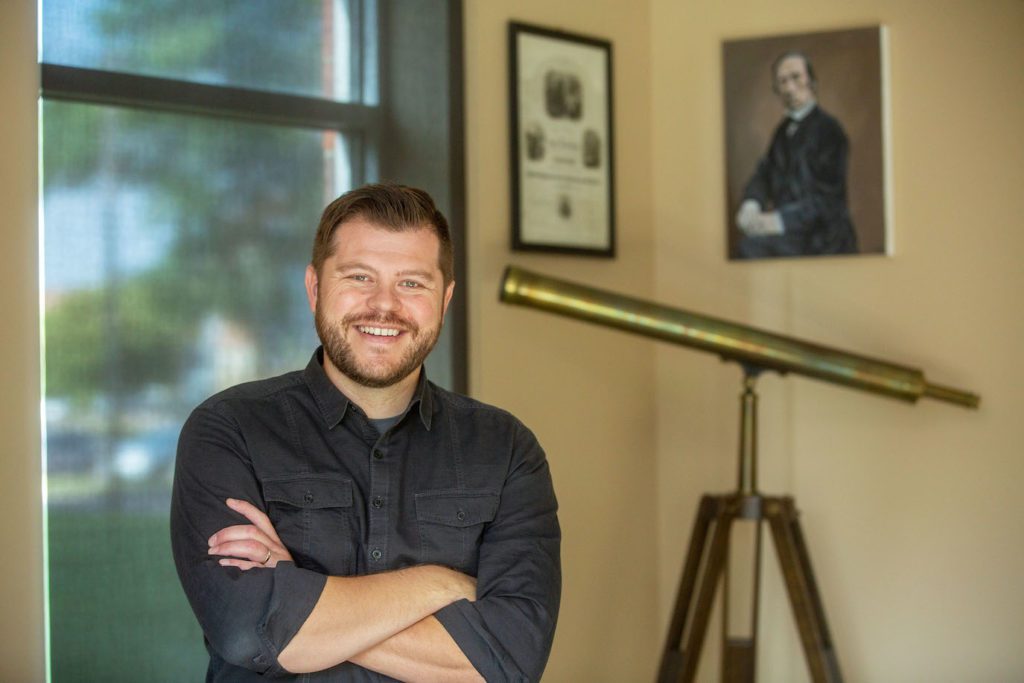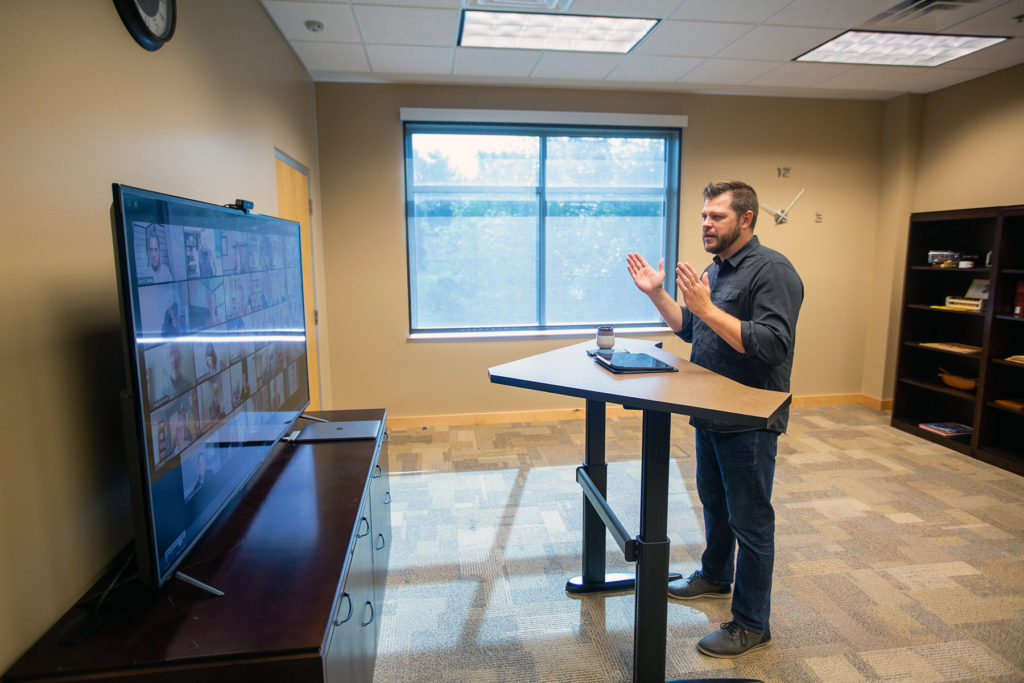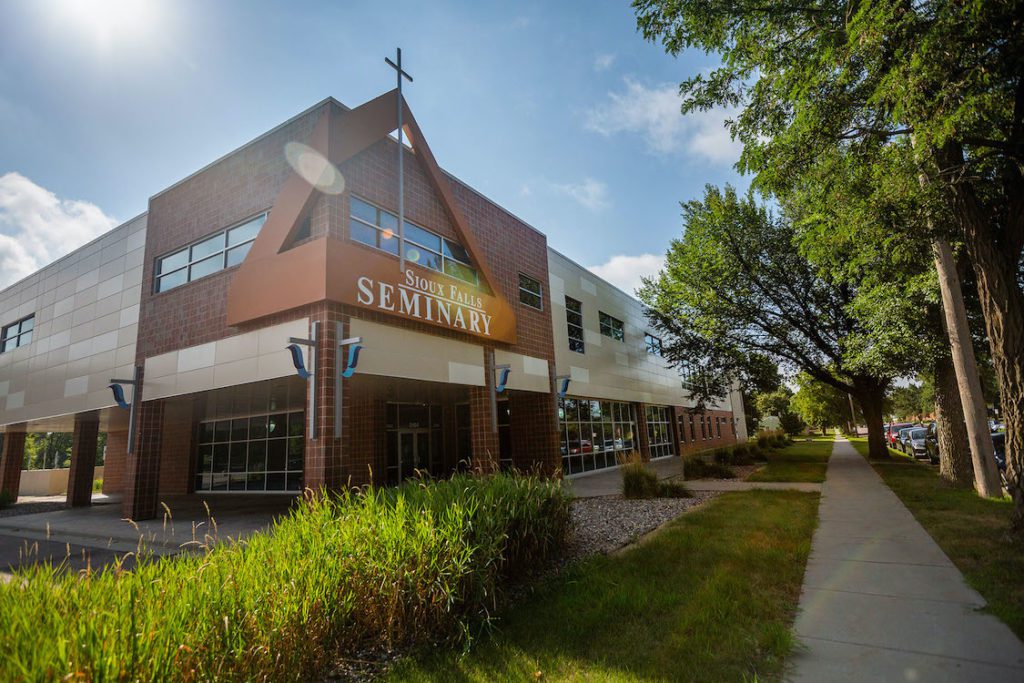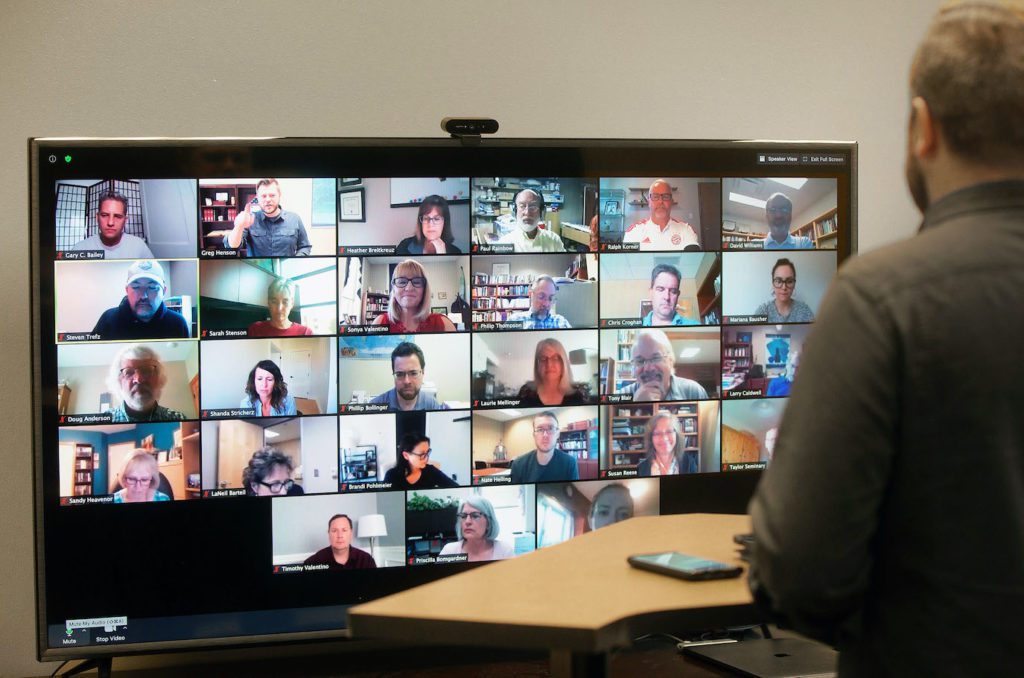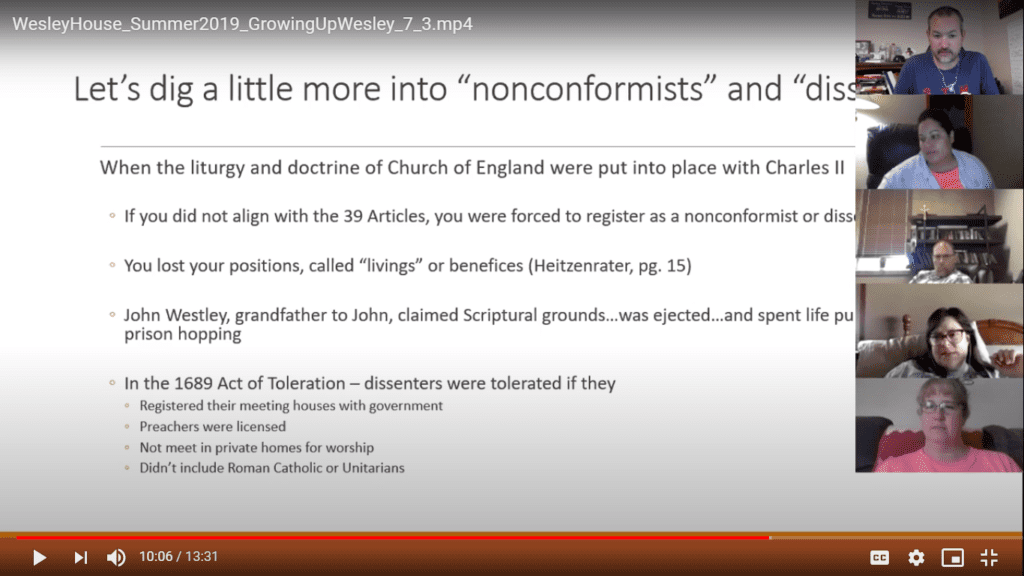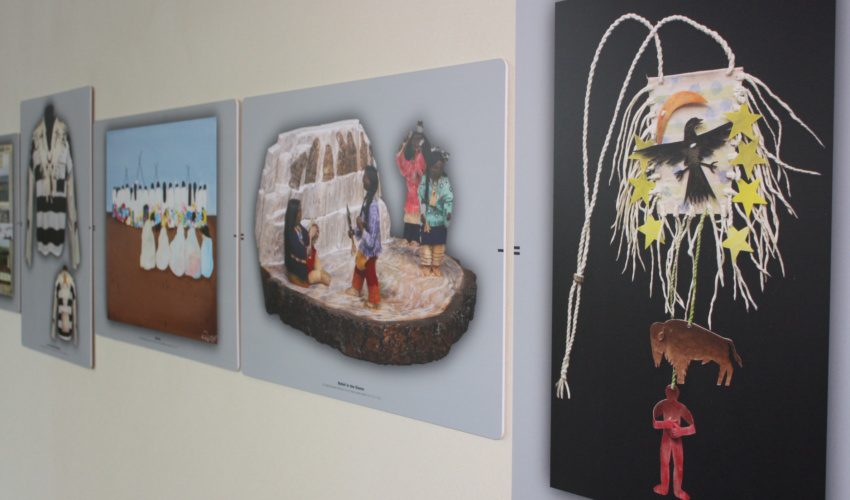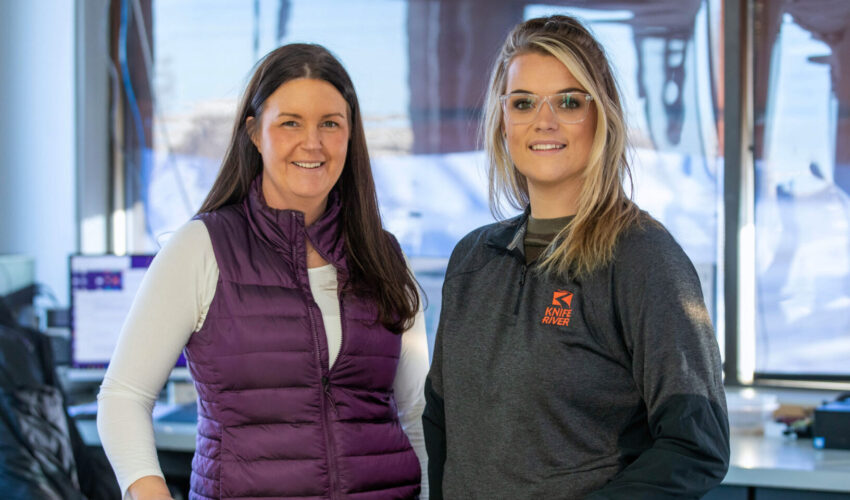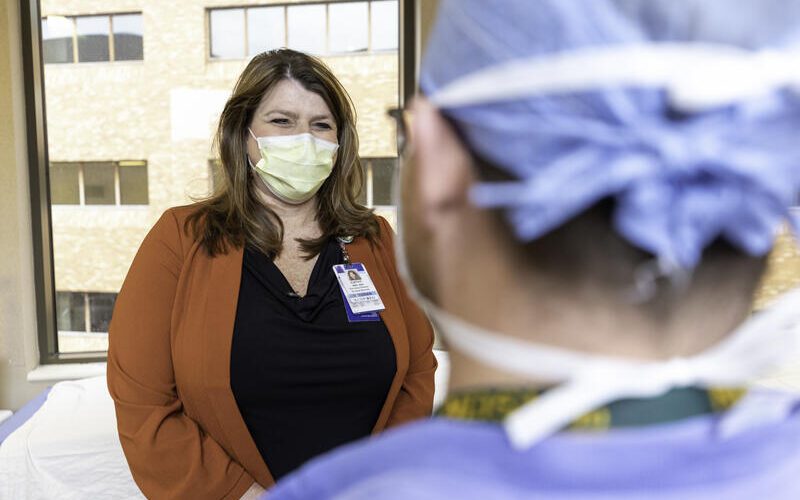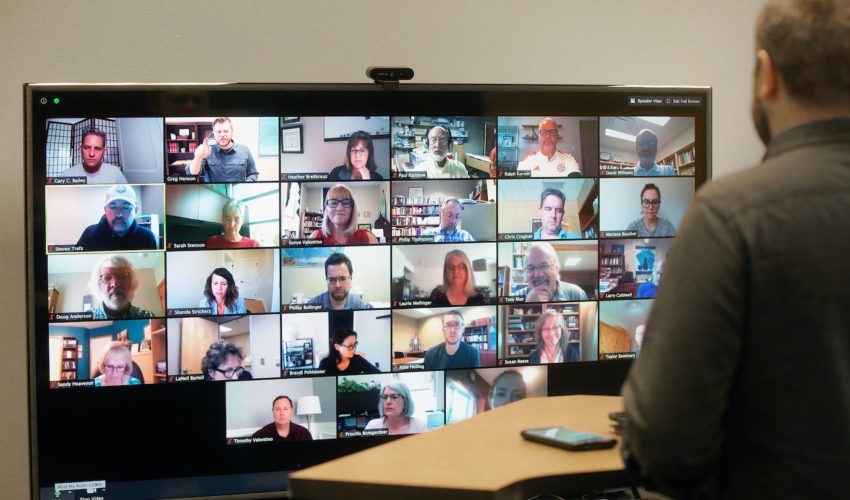Cutting-edge education model thriving in Sioux Falls amid higher education upheaval
Aug. 18, 2020
This paid piece is sponsored by Sioux Falls Seminary.
As colleges and students nationwide scrambled to empty campuses and shift to online learning in the spring, Sioux Falls Seminary sent one email.
“We told our faculty, ‘Say, you know how you already teach everything on Zoom, but people can be in the classroom? Let’s not have people in the classroom.’ It was that simple,” said Greg Henson, who was named the seminary’s president at age 31 and began his role in 2013.
“Students just didn’t come to class, which they could have done already. It was literally no change, no policy change. It was just about not meeting on campus for a while, and it changed nothing.”
The reason nothing changed and the shift could be so seamless, though, is because in recent years Sioux Falls Seminary had changed just about everything.
A business model that revolved around amassing credit hours had shifted to a subscription model with only a month-to-month commitment. For $300 per month, students can engage with the program as much or as little as they choose.
In return, degrees that used to cost about $50,000 now are earned for an average of $10,800.
An institution that had enrollment of around 150 students has climbed to more than 500.
And a balance sheet that used to include years of running deficits now has six consecutive years of positive revenue at a 10 percent to 12 percent operating margin.
“We have students in 35 states and 18 countries. Each of whom are engaged in a context and are surrounded by a team of mentors,” said Nate Helling, CFO and vice president of operations.
“Our network includes students, mentors, faculty and partners. The network is a great referral source. Most students come to us because someone in the network has referred them.”
So while higher education in general is experiencing massive shifts to its delivery systems in the wake of COVID-19, at Sioux Falls Seminary, it’s more or less business as usual. Although in this case, that means managing through continued rapid growth and new relationships that are bringing the Sioux Falls-based program worldwide.
“We’ve made enhancements to the ways students, mentors and educational partners became part of us,” Henson said.
The system of learning developed here – called Kairos, which is Greek for “moments in time” – takes students through personal learning journeys. No two experiences are the same, but each is uniquely tailored with guidance from faculty mentors to meet students where they’re at and equip them with the education they need to grow as leaders.
“For a lot of students, theological education is something they’ve always wanted to pursue, but there have been barriers,” said Shanda Stricherz, chief creative officer and vice president of strategic design.
“It’s either been too expensive or something they couldn’t fit it into their life for one reason or another. Kairos has removed all those barriers and makes it easier to stay where they are and integrate theological education with their life.”
New this year is a Bachelor of Arts in Christian Thought and Practice, which began enrolling students in spring.
“It’s designed to be different,” Henson said. “It’s not intended to be a residential program. Other universities do that well, so it’s not a competitive approach. We created it in response to our partners who kept asking for it. As a result, it is meant to be different than a traditional BA degree.”
Inside, the degree journey is designed “to allow a person to thrive and flourish in their vocation, whatever that is,” Henson said.
“Half is focused on what it looks like to be a faithful participant in the kingdom of God, and the other half is on what it means to have vocational excellence in their chosen vocation, whether it’s computer science or business, for example. Kairos provides that kind of customization and to engage the world in that way.”
Based on the current monthly subscription approach, which allows students to stop at any time, the Bachelor of Arts could be completed typically for $14,000 or for as little as $11,000 if the student is motivated to be done in about three years.
“It’s kind of a disruptive pricing model,” Helling acknowledged. “And we have a version of it tied to our Master of Divinity where a student could do five years for $15,000 or $16,000.”
Graduate offerings include:
- Doctor of Ministry
- Master of Divinity
- Master of Arts in Counseling
- Master of Arts in Christian Leadership
- Master of Arts with a focus of choice such as organizational change or leadership
- Certificate of Completion for Training in Spiritual Direction
- Graduate Certificate in Theological Studies
Undergraduate offerings are:
- Bachelor of Arts in Christian Thought and Practice
- Associate of Arts in Christian Thought and Practice
While all the programs have solid interest, the Master of Divinity, which is losing enrollment elsewhere nationwide, remains the most popular.
“If you can make it affordable, relevant and accessible, it is the one people want,” Henson said. “When you go to seminary, often that’s the degree you go for. And it’s a generalized approach, and most people when they enroll already have a job, but they want a broader understanding of what it means to do that job well. The Master of Divinity is the best way to do that because it gives exposure to leadership and critical thinking and emotional intelligence and biblical study.”
Sioux Falls Seminary delivers all its course work online but takes a different approach with engagement. Instead of thinking about how to replicate a classroom environment online, “it’s better to think about how you have the possibility to do things that are impossible in a classroom,” Henson said.
“With Zoom and its breakout features, you have unlimited space. If I have a class of 30 and want to break them into small groups, I am limited by the space in the room, and often groups can’t have meaningful conversations because they’re overhearing others. We had a class of 300 in April, and we were able to break it into groups of six that met to do case studies. That’s impossible to do on our campus.”
Faculty mentors who participate from around the world with a vast array of specialties and students who bring equally diverse perspectives and experiences provide a global experience with immense value, he added.
“And in a classroom, it’s easier to hide. On Zoom, we see everyone’s face.”
Sioux Falls Seminary continues to broaden its reach through a variety of partnerships – a network Henson sees getting only bigger.
“The four words that started this back in 2013 were ‘affordable, accessible, relevant and faithful,’ and the vision of creating a system of education and integrated counseling that is just that remains. There are new frontiers, but the cornerstones of why we do what we do haven’t changed.”
To learn more about educational opportunities at Sioux Falls Seminary, click here.

